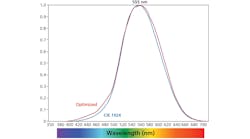SEPIC, or Single Ended Primary Inductance Converter, is a DC/DC converter topology, which is ideal for low voltage DC/DC applications, such as automobile headlights, as well as other LED lighting applications.
Michael Weirich, engineering manager at Fairchild's design center, explained to LEDs Magazine the significance of using SEPIC topology. "In many battery powered applications (like automotive lighting or portable devices) one has the problem that the battery voltage varies over a wide range (e.g. 8-16 volts) and the output voltage needs to be stable e.g. 12 volts," says Weirich. "The solution is a DC/DC converter, which transforms input voltage upwards (if battery is below 12V) and downwards (if battery is higher than 12V). Unlike the more well known 'boost converter' which only transforms voltages up, and the 'buck converter' which works only downwards, the SEPIC topology easily solves this problem."
Fairchild says that its driver designs offer a wide range of options, including optimizing factors such as EMI and efficiency, and are highly variable in terms of input and output voltage as well as output power.
“Fairchild’s Global Power Resource design center in Europe also developed a design, using the SEPIC topology, to drive up to seven LEDs with 30V max output and 350mA constant current as well as up to 36 low power LEDs with 120V max output with 70mA constant current,” said Ole-Peter Brusdal, regional vice president, European Sales and Marketing.
The use of car headlights during the daytime is expected to become mandatory in the European Union under plans being discussed by the European Commission to cut the number of road accidents.
Today’s automobiles are beginning to use high brightness LEDs of up to 1W of power. However daytime headlights typically require five to seven LEDs to comply with the distribution pattern requirements of the expected new standard. Ideally, these LEDs should be connected in a series to ensure the current, and therefore the brightness, of each device is identical. By being able to transform voltages up as well as down, SEPIC topology can easily meeting these requirements.
While SEPIC topology is ideal for DC/DC applications, it is also an excellent choice in non-isolated low power AC/DC applications, such as power supplies for industrial controls and white goods. This topology offers cost-effective solutions, achieving an efficiency of about 80%.
“Fairchild is fortunate to have the caliber of talent in Michael Weirich and his team to develop innovative designs using SEPIC topology in a expansive range of low voltage applications, such as daytime running headlights, DC/DC converters and off-line AC/DC solutions,” said Brusdal.






